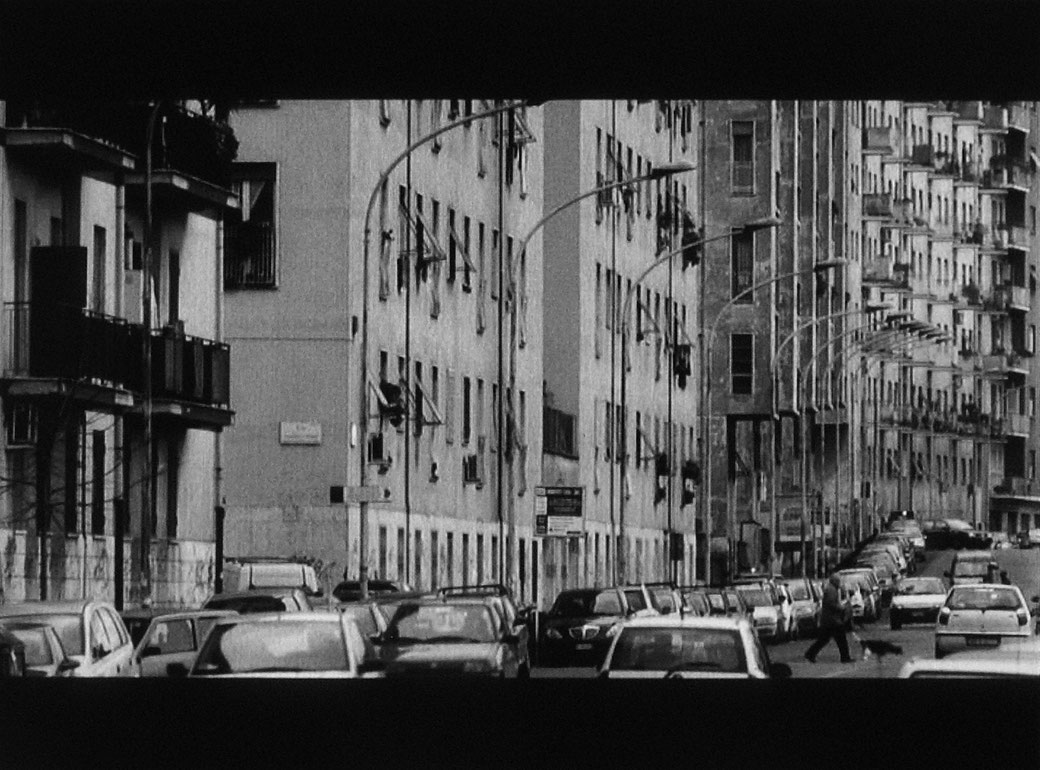Borgate
It was originally intended to be modern Italys showcase urban project after WWII: the Don Bosco housing project on the southern edge of Rome. Though planned while Mussolini was in power, Don Bosco matches the Modernist style of the 1950s and 1960s and is wholly in harmony with the spirit of postwar reconstruction. As it is comparable to housing projects in other large European cities, this housing project demonstrates the gap between sociopolitical utopias of the Modern age and their reality in a virulent manner.
Borgate is media artist and architect Lotte Schreibers latest installment in her series of filmic examinations of architecture and (urban) space.
Schreibers works are cartographic portrayals in film form in which she attempts to translate the formal languages of landscape or architecture into a formal language of cine matography. This process was also applied to Borgate: Schreiber consistently transfers Don Bosco, which was designed by the citys urban planning department, into rigidly framed images and sequences of serial montage.
In the interplay of these mainly static shots and relaxed pans across facades and structural details, combined with quotes from Pasolini and Fellini to Antonioni, Borgate produces a visual and acoustic showcase of failed urban utopias. All this is underlined by Bernhard Langs symphonic composition, which gives the petrification of the images a wholly dramatic component. This animation is reinforced by abrupt intrusions of video fragments in violent motion, resembling what seem to be splinters from a real space in the aesthetic filmic space.
In contrast to Antonionis men about town, for example, whose psychological crises are reflected in the objets trouvés, wide streets, two-dimensional façades and empty suburban squares, Schreiber searches for and finds precise details and total views of these outlying urban zones for the purpose of dealing with the crisis of the Modern age itself. (Gerald Weber)
Translation: Steve Wilder

